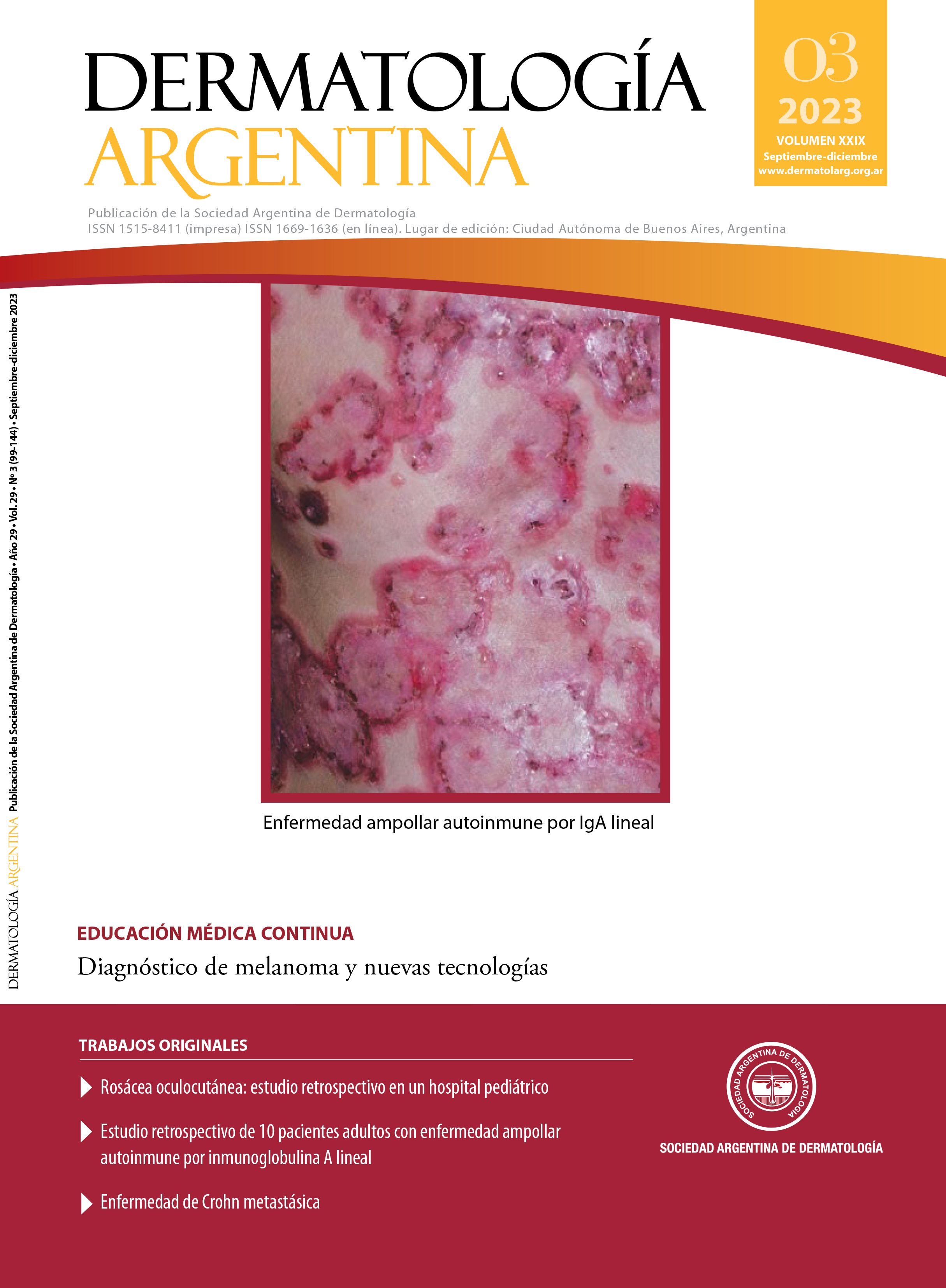Chronic cutaneous leishmaniasis
DOI:
https://doi.org/10.47196/da.v29i3.2402Keywords:
chronic cutaneous leishmaniasis, zoonosis, endemicAbstract
Leishmaniasis is an endemic zoonosis in more than 90 countries, with incidence increasing. Its clinical manifestations are variable, it can involve the skin, mucous membranes and internal organs; The diagnosis is usually late, with progression towards chronicity. We present the case of a 58-year-old patient who presented an ulcerative lesion on the dorsum of the right hand and the distal third of the dorsum of the ipsilateral forearm of 20 years of evolution, with severe compromise of mobility, multiple infectious events and surgical toilets. He was referred to our service, where culture and polymerase chain reaction (PCR) were performed, positive for Leishmania sp.
References
I. Lorenz AM, Molina S, Liatto de Nogaló A, Garlatti MI, et ál. Consenso sobre leishmaniasis. Sociedad Argentina de Dermatología. 2008. Disponible en: https://sad.org.ar/wp-content/uploads/2019/10/Consenso-sobre-Leishmaniasis-–-2008.pdf.
II. Abadías-Granado I, Diago A, Cerro PA, Palma-Ruiz AM, et ál. Leishmaniasis cutánea y mucocutánea. Actas Dermosifiliogr. 2021;112:601-618.
III. De Vries H, Schallig H. Cutaneous leishmaniasis. A 2022 updated narrative review into diagnosis and management developments. Am J Clin Dermatol. 2022;23:823-840.
IV. Burza S, Croft SL, Boelaert M. Leishmaniasis. Lancet. 2018;392:951-970.
V. OPS/OMS. Leishmaniasis. Actualización 2016. Boletín OPS/OMS.
VI. WHO. Control of neglected tropical diseases. World Health Organization. Geneva: WHO; 2020.
VII. Elkhoury AN, Nicholls RS, Yadón Z. Leishmaniasis en las Américas: recomendaciones para el tratamiento. OPS/OMS. Washington, DC. 2013;7-42.
Downloads
Published
Issue
Section
License
Copyright (c) 2023 on behalf of the authors. Reproduction rights: Argentine Society of Dermatology

This work is licensed under a Creative Commons Attribution-NonCommercial-NoDerivatives 4.0 International License.
El/los autor/es tranfieren todos los derechos de autor del manuscrito arriba mencionado a Dermatología Argentina en el caso de que el trabajo sea publicado. El/los autor/es declaran que el artículo es original, que no infringe ningún derecho de propiedad intelectual u otros derechos de terceros, que no se encuentra bajo consideración de otra revista y que no ha sido previamente publicado.
Le solicitamos haga click aquí para imprimir, firmar y enviar por correo postal la transferencia de los derechos de autor











